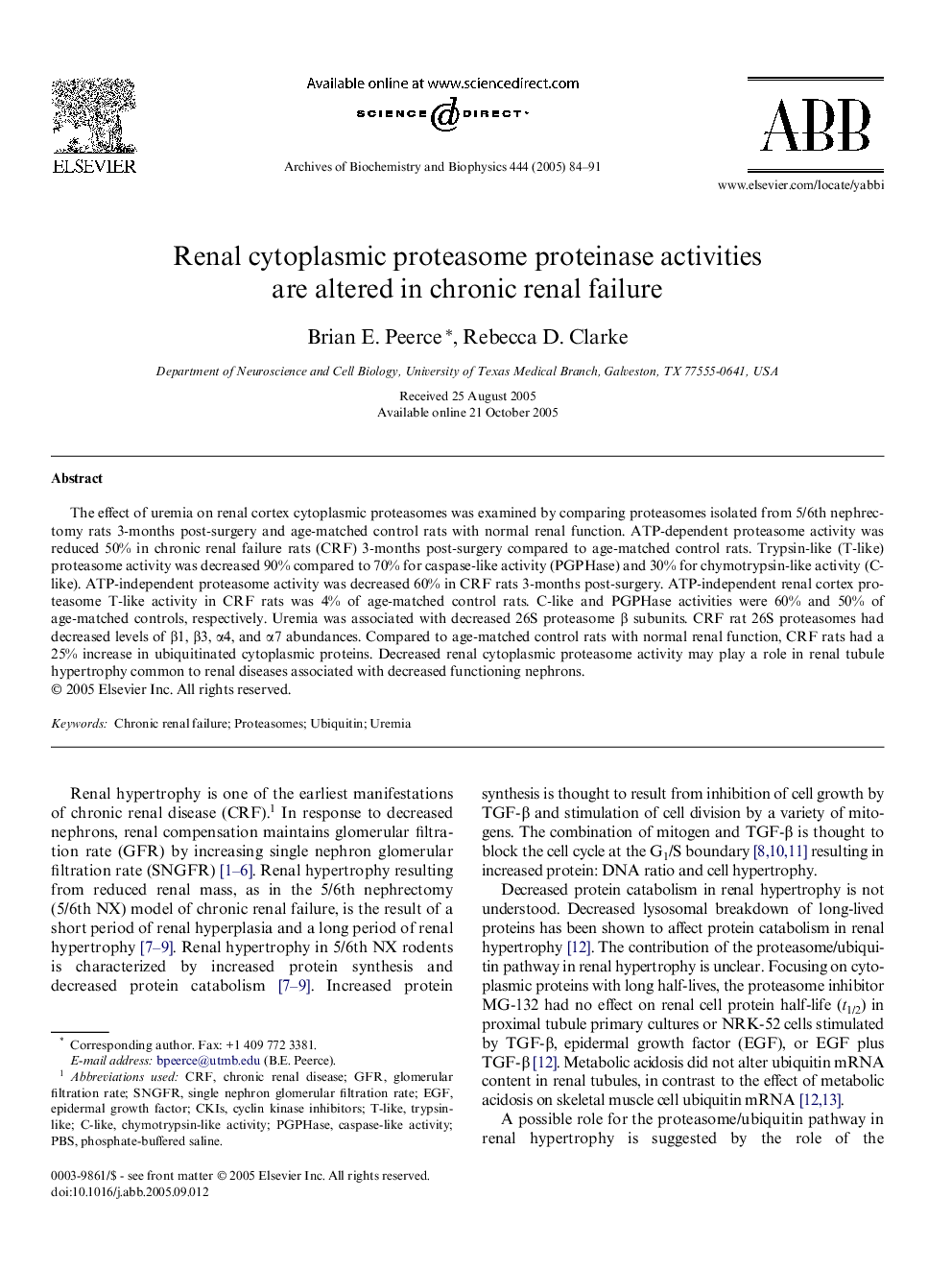| Article ID | Journal | Published Year | Pages | File Type |
|---|---|---|---|---|
| 9882059 | Archives of Biochemistry and Biophysics | 2005 | 8 Pages |
Abstract
The effect of uremia on renal cortex cytoplasmic proteasomes was examined by comparing proteasomes isolated from 5/6th nephrectomy rats 3-months post-surgery and age-matched control rats with normal renal function. ATP-dependent proteasome activity was reduced 50% in chronic renal failure rats (CRF) 3-months post-surgery compared to age-matched control rats. Trypsin-like (T-like) proteasome activity was decreased 90% compared to 70% for caspase-like activity (PGPHase) and 30% for chymotrypsin-like activity (C-like). ATP-independent proteasome activity was decreased 60% in CRF rats 3-months post-surgery. ATP-independent renal cortex proteasome T-like activity in CRF rats was 4% of age-matched control rats. C-like and PGPHase activities were 60% and 50% of age-matched controls, respectively. Uremia was associated with decreased 26S proteasome β subunits. CRF rat 26S proteasomes had decreased levels of β1, β3, α4, and α7 abundances. Compared to age-matched control rats with normal renal function, CRF rats had a 25% increase in ubiquitinated cytoplasmic proteins. Decreased renal cytoplasmic proteasome activity may play a role in renal tubule hypertrophy common to renal diseases associated with decreased functioning nephrons.
Related Topics
Life Sciences
Biochemistry, Genetics and Molecular Biology
Biochemistry
Authors
Brian E. Peerce, Rebecca D. Clarke,
